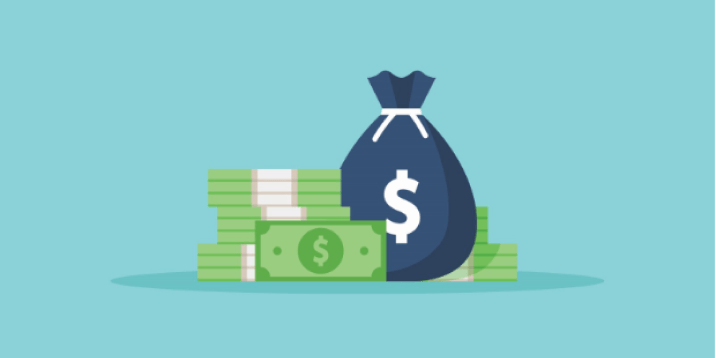Blogs to Go
How to Price Your Amazon Product: Setting Your Listing Up for Maximum Profitability

Pricing Amazon products can be a minefield. Too low and you won’t make a profit; too high and you’ll scare customers off. Here we look at the factors that you should consider when pricing your product.
The “Goldilocks Zone”
It’s very easy for a faulty pricing strategy to cost you sales.
In a recently published Harvard Business Review, pricing experts at McKinsey and Company showed that an 11.1% increase in profit could be gained by a mere 1% price improvement.
The conclusions the study reached were unequivocal: “The fastest and most effective way for a company to realize its maximum profit is to get its pricing right.”
If you want to be the best seller in your category you have to appear on page one of the search results page. Statistics show that sellers who appear on the first page get 70% of the sales.
More efficient conversions depend on three vital product pricing factors.
Calculating Cost
It’s absolutely crucial you know the exact cost of your item – manufacturing; shipping it to an FBA center – everything.
Consider the following when calculating your costs:
- Raw materials: Any materials used in the manufacturing process (metal, wood, plastic, cloth, etc.).
- Labor: Workforce hours and time are needed to create any product.
- Assembly: This describes the process of getting all your components into one finished product (includes labor and machine costs).
- Storage: Housing inventory includes your own facilities if you fulfill your orders (Fulfilled by Merchant), as well as Amazon’s services (Fulfilled by Amazon).
- Shipping: Getting your products from your home/office to an Amazon fulfillment center anywhere in the world requires a sometimes lengthy and costly shipping process.
- Marketing: Content writers, marketers, and graphic artists need to pay if you want high-quality ad campaigns (both online and offline).
- Returns: You will lose profits when customers return your product. Amazon also takes 20% of the original commission as a return fee.
- Taxes: This varies hugely. Governments charge per transaction, and there’ll be both state and local deductions from your precious revenue.
- Miscellaneous: The things that don’t fall into the above categories include accounting fees, insurance, and repairs.
- FBA fees (If Applicable): FBA services charge a monthly subscription for inventory storage (per item) and referrals.
Divide the final cost by the number of products you aim to produce in a given time period to calculate your average cost per item.
Your gross profit margin target (GPMT) is the profit percentage you want to generate per item that you sell.
It is calculated using the formula: (Price – Cost) / Price = GPMT.
Creating a spreadsheet and inputting a function equation will create your GPMT.
Follow these instructions if you’re using Google Sheets or Microsoft Excel.
-
The first three columns should be named as follows:
- Column A – Price
- Column B – Cost
- Column C – Gross Profit Margin Target
- Cell A2 – put the price of your product.
- Cell B2 – put the cost of your product
- Cell C2 – Type the formula =(A2 -ROW(B2) / ROW(A2))
- To apply this formula to other products drag the formula down from the right-hand corner of cell C2.
After this you will need to work out your current profit margin so it can be compared with your new-found GPMT:
-
The first four columns should be as follows:
- Column A – Revenue
- Column B – Cost
- Column C – Profit
- Column D – Profit Margin
- Input the sale price in the Revenue column.
- Input the product’s cost in the Cost column.
- Create a formula in the Profit column so the profit on the sale can be calculated.
- Ensure the formula reads “=A2-B2” so it subtracts the cost of the product from the sale price. Your overall profit will be revealed by this difference.
-
In the last column generate a formula so the profit margin on each sale can be calculated.
- Profit needs to be divided by the amount of the sale or =(C2/A2)*100 to get a percentage.
The majority of manufacturers and retailers set their profit targets at about 50% whereas distributors want closer to 30%.
Stop wasting time on spreadsheets and start using what the professionals use.
Customers
Because customers are the most important feature of your product they play a significant part in how your Amazon product is priced.
The big question is what type of customer your business is aiming to attract in order to get things up and running as successfully as possible.
Make this decision by looking closely at your gathered cost data and scrutinizing the competition in your Amazon category. Find weaknesses in competitors’ listings and make sure your product listing avoids these errors. Customers will turn to you when they compare your product favorably with others that have poor image quality, commonly-recurring complaints, and item descriptions where info is confusing or lacking.
Knowing the different types of customer archetypes is a sure-fire way of pricing your product correctly and making sure your profits start – and remain – high.
- Splurger: spontaneous spenders who make impulse purchases.
- Bargain Hunter: these people are happy to spend time searching and comparing products so they get the best deal possible.
- Quality-Driven: happy to spend more on quality and brand-name.
These shoppers tend to follow similar patterns of consumer behavior. The Splurger might disregard cost because they had a very positive first impression of your product. On the other hand, the bargain-hunter might forfeit quality for a lower price. Remember that making your item a bit more expensive than its nearest rival may attract customers who associate quality with higher prices.
Research consumer forums and take note of survey responses from existing and prospective customers to gain a better understanding of your target audience. Once you know which type of customer produces the highest sales volume you’ll be better placed to set your price and fulfill your customers’ needs.
Competition
Effective analysis of the multiple sellers in your category should give you some key insights into pricing. You may notice that some of your competitors have their pricing strategy set up perfectly and their profits handsome accordingly. Others might surprise you with odd pricing which seems to under-value or over-value their product. Product reviews and star ratings will tell you a lot about whether customers thought they got value for money.
Raising your price slightly so it’s more expensive implies a higher value and worth than the cheaper products in your category - perceived value is a very important aspect of consumer psychology. You must make sure you accentuate your unique and superior benefits in the description so that consumers know immediately that yours is the product to go for.
What happens if your item has the same perceived value as your competitors? In this case, setting your price a bit lower may appeal to bargain shoppers. Think long and hard about this strategy though - under pricing a rival can easily trigger a price war where everyone’s profits fall - the dreaded “race to the bottom”.
Final Thoughts
It’s quite difficult to get your pricing structure right, especially at first. Once you’ve found the magic number though the stability and confidence this brings your brand should pay dividends.
What’s the difference between $19.99 and $20? One cent in value, but according to recent studies (across the majority of product categories) a noticeable difference in profits if you choose the former as your pricing structure.
As a very last word remember that predicting product trends is important too. If you know what’s going to sell then you can plan accordingly and get a head start on competitors.

